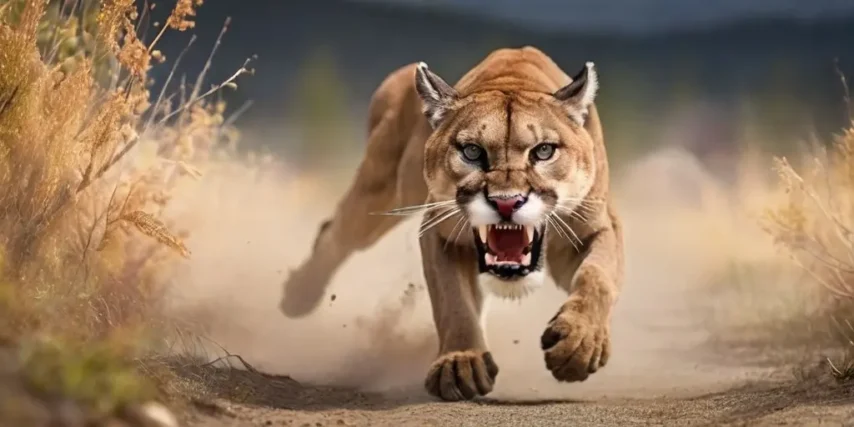Mastering the Hunt: A Comprehensive Guide to Cougar Hunting
In the realm of outdoor pursuits, few experiences rival the thrill and challenge of cougar hunting. Revered for their elusive nature and formidable prowess, cougars, also known as mountain lions or pumas, command both respect and fascination. However, embarking on a cougar hunt demands more than just skill; it requires meticulous preparation, deep understanding of the predator’s behavior, and utmost respect for the wilderness. In this comprehensive guide, we delve into the art and science of cougar hunting, equipping you with the knowledge and expertise to pursue this majestic creature responsibly and ethically.
Understanding the Cougar:
Before delving into the techniques of cougar hunting, it’s imperative to grasp the intricacies of the animal itself. Cougars, solitary and elusive by nature, inhabit diverse ecosystems ranging from dense forests to rugged mountainous terrain. Renowned for their stealth and agility, these apex predators possess keen senses and remarkable adaptability, making them formidable hunters in their own right.

Preparation and Planning:
Successful cougar hunting begins long before setting foot in the wilderness. Thorough preparation is key to a safe and rewarding experience. Start by familiarizing yourself with the legal regulations and requirements governing cougar hunting in your area. Obtain necessary permits and licenses, and ensure compliance with all relevant laws and regulations.
Next, meticulously plan your hunt, taking into account factors such as terrain, weather conditions, and time of year. Cougars are most active during low-light periods such as dawn and dusk, so plan your outings accordingly. Familiarize yourself with the terrain and identify potential hunting grounds, paying special attention to areas with recent cougar activity, such as tracks or kill sites.
Gear and Equipment:
Investing in quality gear is essential for a successful cougar hunt. Begin with appropriate clothing and footwear designed for rugged outdoor conditions. Opt for camouflage attire to blend seamlessly into the natural surroundings. Equip yourself with a reliable firearm or bow suitable for hunting cougars, adhering to local regulations regarding caliber and weapon type.
Additionally, consider essential gear such as a high-quality optics, including binoculars and a spotting scope, to aid in scouting and tracking. A GPS device or smartphone with GPS capabilities is indispensable for navigation in remote wilderness areas. Pack sufficient food, water, and emergency supplies, and always carry a means of communication, such as a two-way radio or satellite phone, in case of emergencies.

Scouting and Tracking:
A successful cougar hunt hinges on your ability to scout and track the elusive predator effectively. Start by surveying potential hunting areas for signs of cougar activity, such as tracks, scat, and scratch marks on trees. Cougars are territorial animals, so identifying their territory boundaries can be instrumental in locating them.
Once you’ve identified promising hunting grounds, employ stealth and patience as you track the cougar’s movements. Look for fresh tracks and signs of recent activity, such as kills or scent markings. Cougars are masters of camouflage, so be vigilant and scan the surroundings carefully for any movement or disturbances.
Calling and Luring:
Calling can be an effective technique for attracting cougars within range. Use a predator call, such as a distressed prey or cougar vocalization, to mimic natural sounds and pique the curiosity of nearby cougars. Position yourself downwind from the calling location to prevent your scent from alerting the predator.
Alternatively, consider using bait or scent lures to attract cougars to your location. Fresh meat or carcasses can be used as bait, strategically placed in areas frequented by cougars. Additionally, commercial scent lures formulated specifically for cougars can be highly effective in enticing the predator within shooting range.

Ethical Considerations:
As stewards of the wilderness, it’s paramount to approach cougar hunting with the utmost respect for the animal and its habitat. Practice ethical hunting principles, including selective targeting of mature animals and minimizing disturbance to non-target species. Always prioritize safety, both for yourself and others, and adhere to all hunting regulations and guidelines.
Cougar hunting represents a unique and challenging pursuit, requiring skill, patience, and reverence for the natural world. By understanding the behavior of the cougar, meticulous preparation, and employing effective hunting techniques, you can enhance your chances of a successful and rewarding hunt. Remember to prioritize safety, respect for wildlife, and ethical hunting practices, ensuring a memorable experience for generations to come. Happy hunting!







